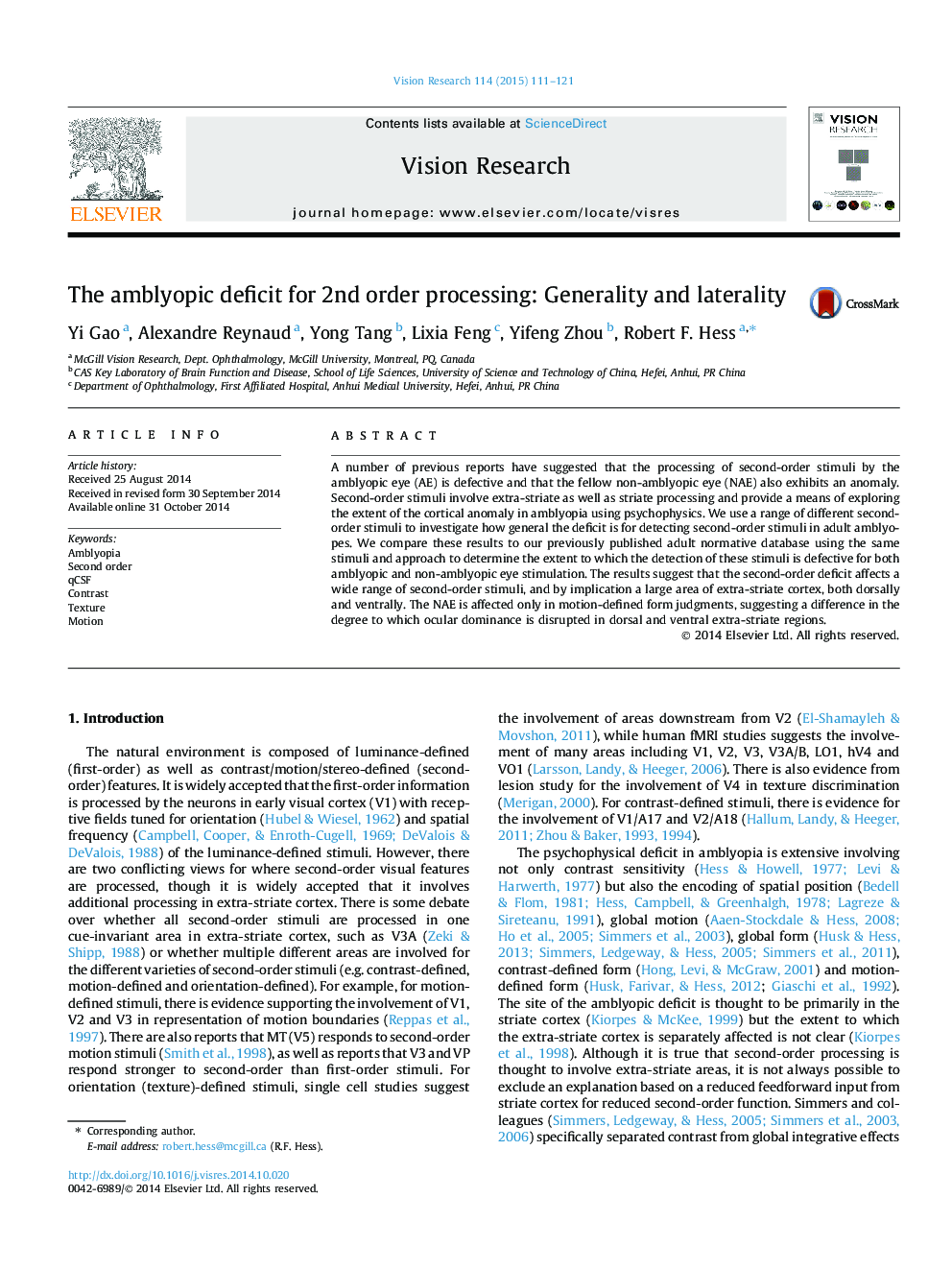| Article ID | Journal | Published Year | Pages | File Type |
|---|---|---|---|---|
| 4033604 | Vision Research | 2015 | 11 Pages |
•We study the extent of the extra-striate cortical anomaly in amblyopia.•We measure modulation sensitivity functions of a range of second-order stimuli.•Quick contrast sensitivity (qCSF) method applied to 2nd-order processing in amblyopes.•A general deficit in amblyopic eyes suggests broad damage in extra-striate cortex.•Non-amblyopic eyes are affected surprisingly only in motion-defined form judgments.
A number of previous reports have suggested that the processing of second-order stimuli by the amblyopic eye (AE) is defective and that the fellow non-amblyopic eye (NAE) also exhibits an anomaly. Second-order stimuli involve extra-striate as well as striate processing and provide a means of exploring the extent of the cortical anomaly in amblyopia using psychophysics. We use a range of different second-order stimuli to investigate how general the deficit is for detecting second-order stimuli in adult amblyopes. We compare these results to our previously published adult normative database using the same stimuli and approach to determine the extent to which the detection of these stimuli is defective for both amblyopic and non-amblyopic eye stimulation. The results suggest that the second-order deficit affects a wide range of second-order stimuli, and by implication a large area of extra-striate cortex, both dorsally and ventrally. The NAE is affected only in motion-defined form judgments, suggesting a difference in the degree to which ocular dominance is disrupted in dorsal and ventral extra-striate regions.
